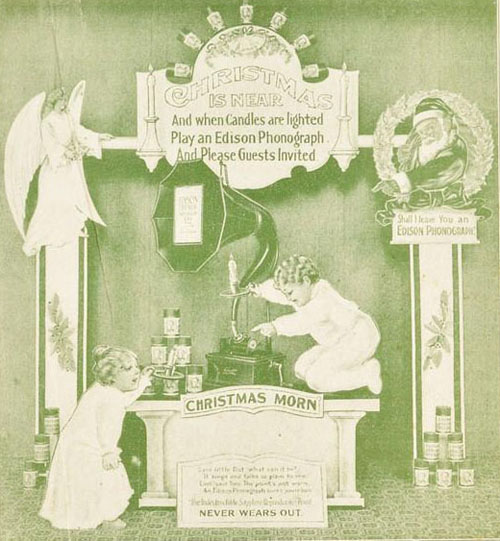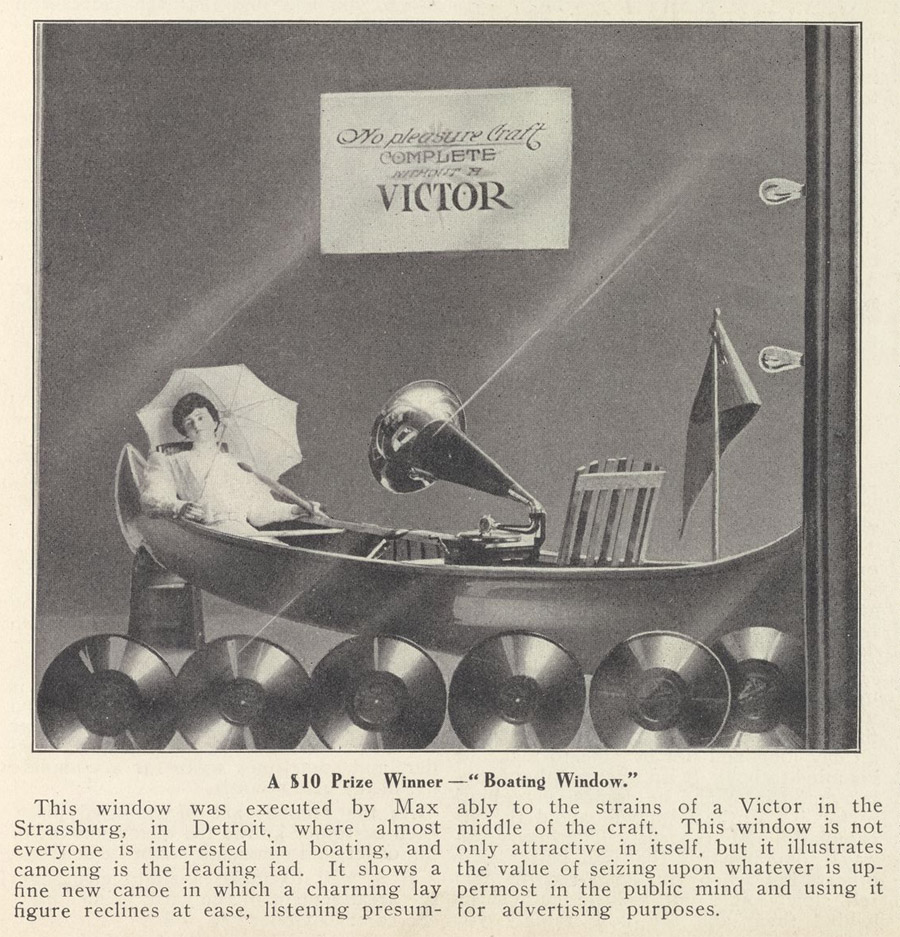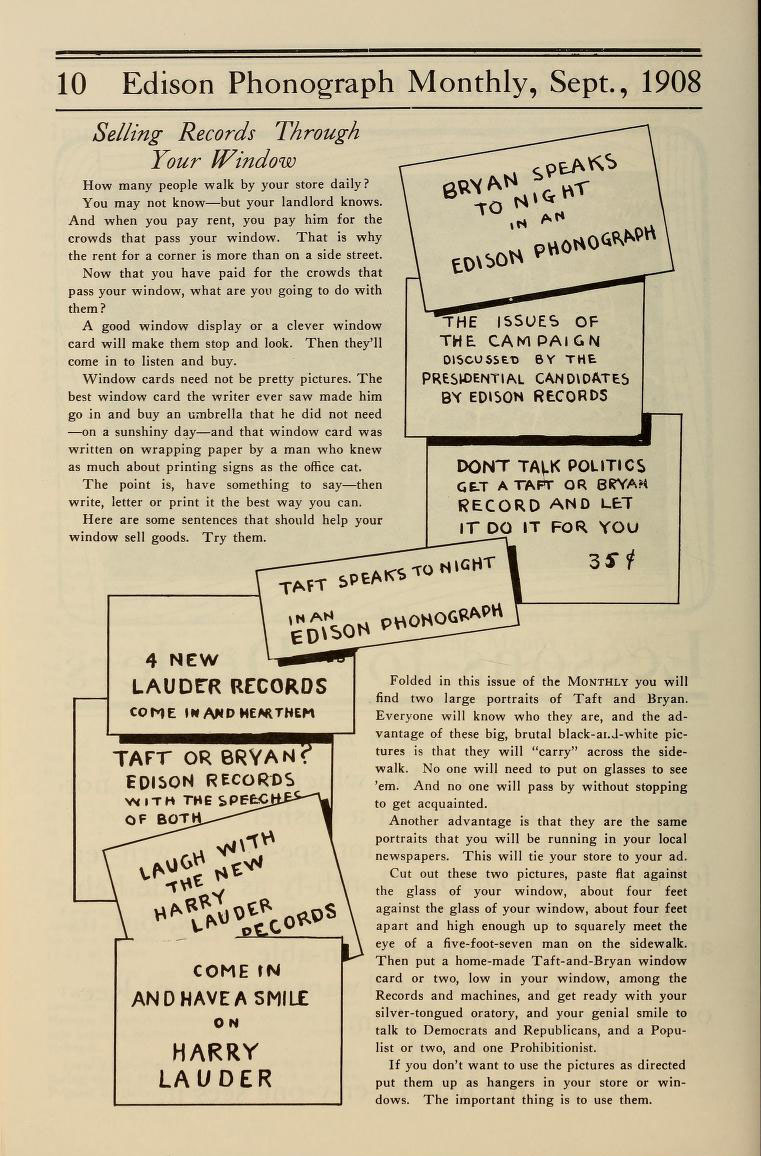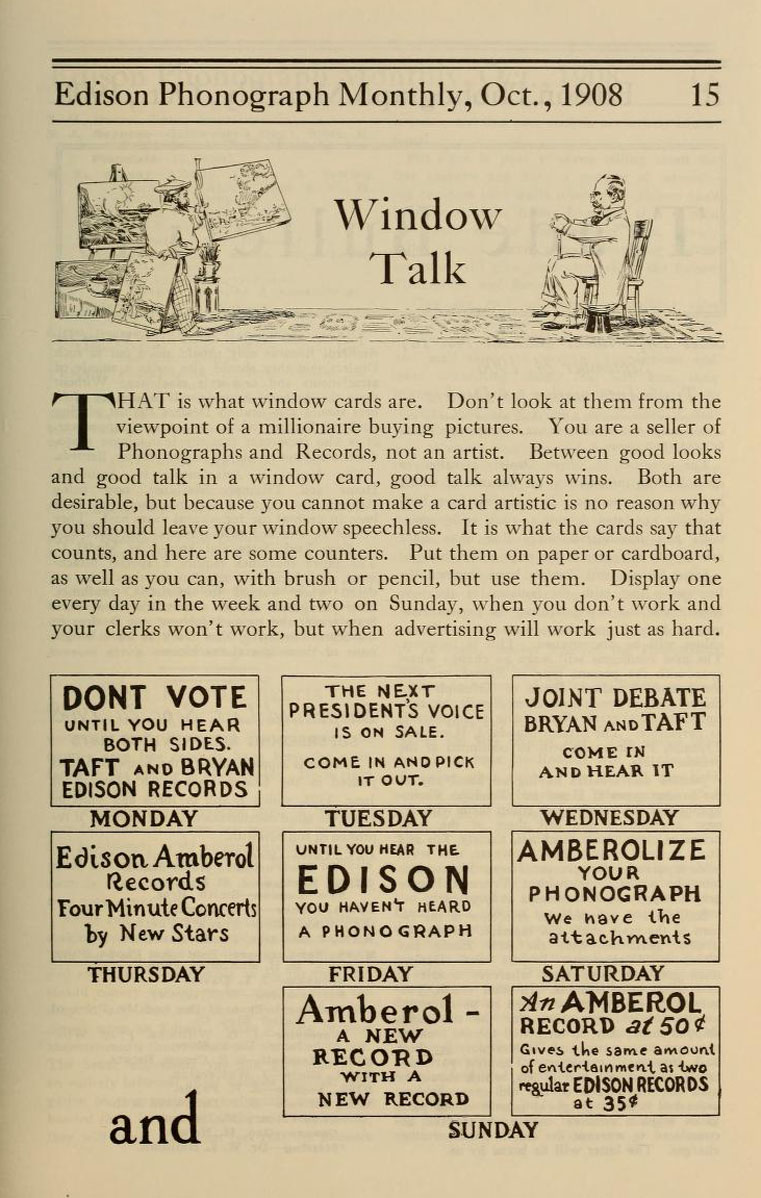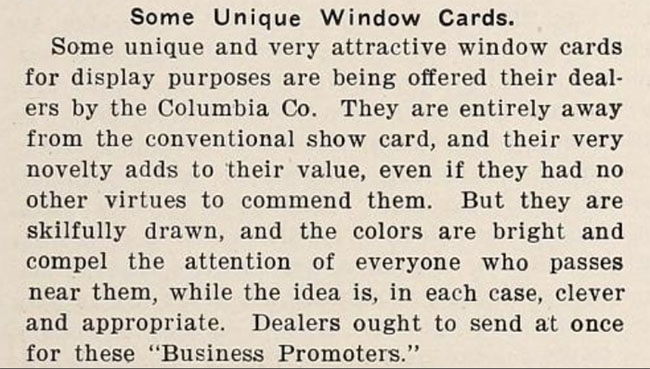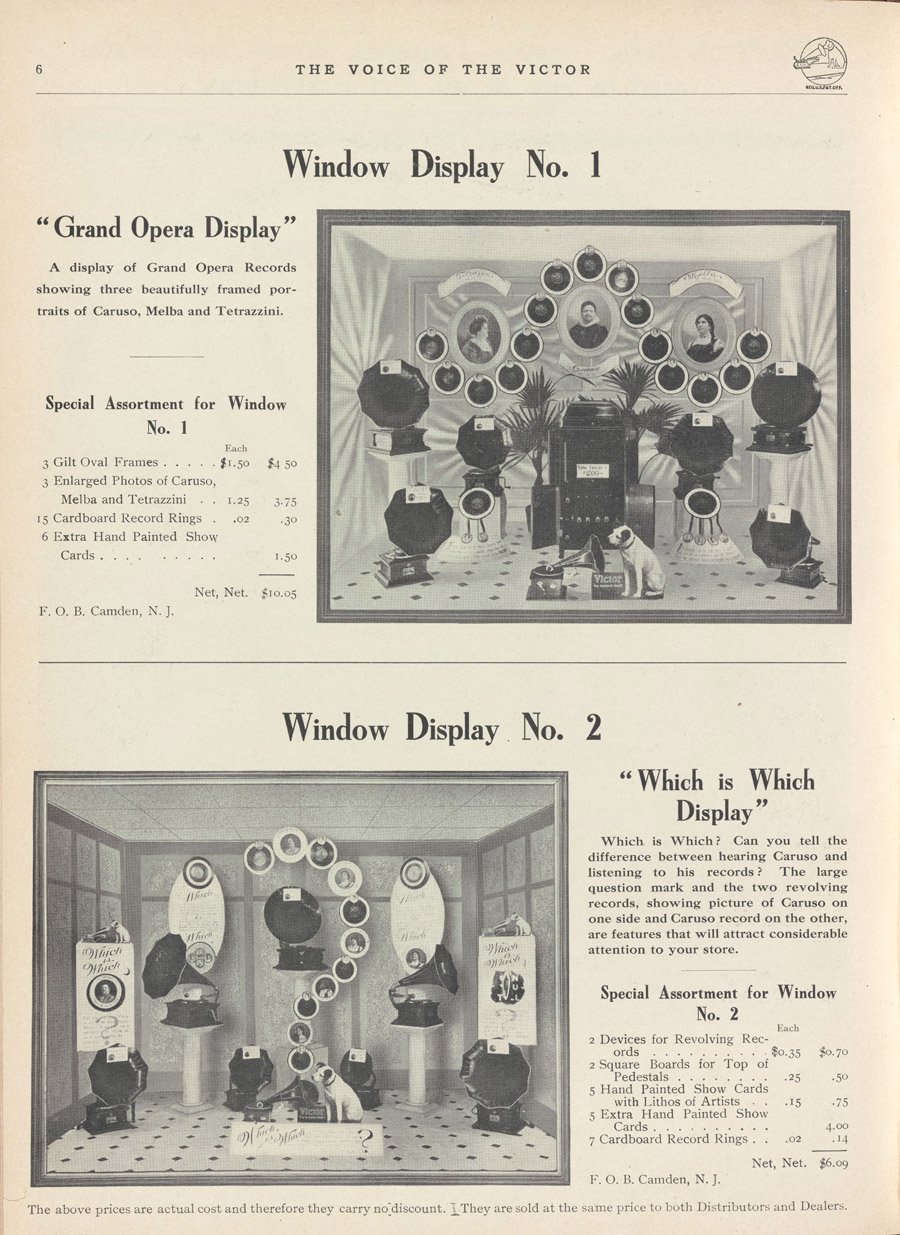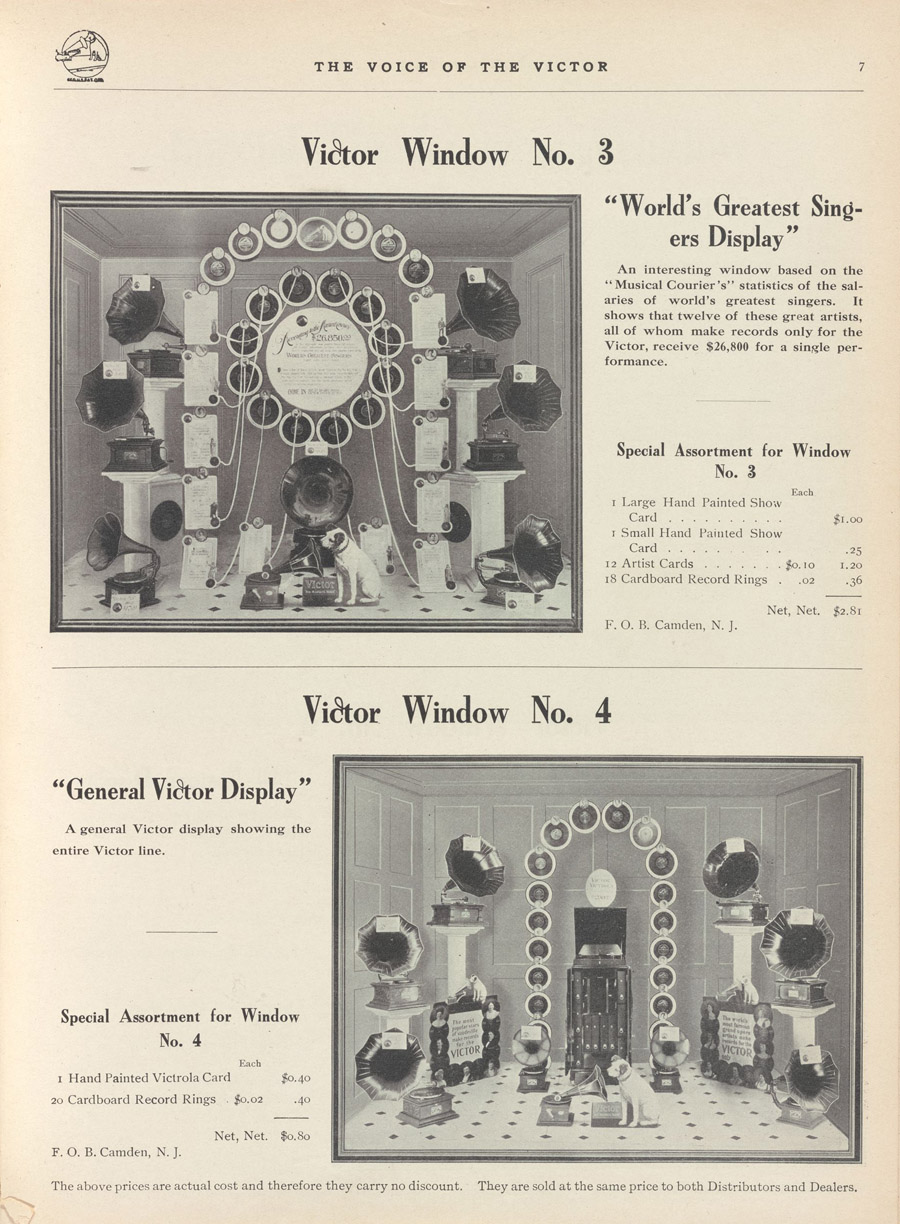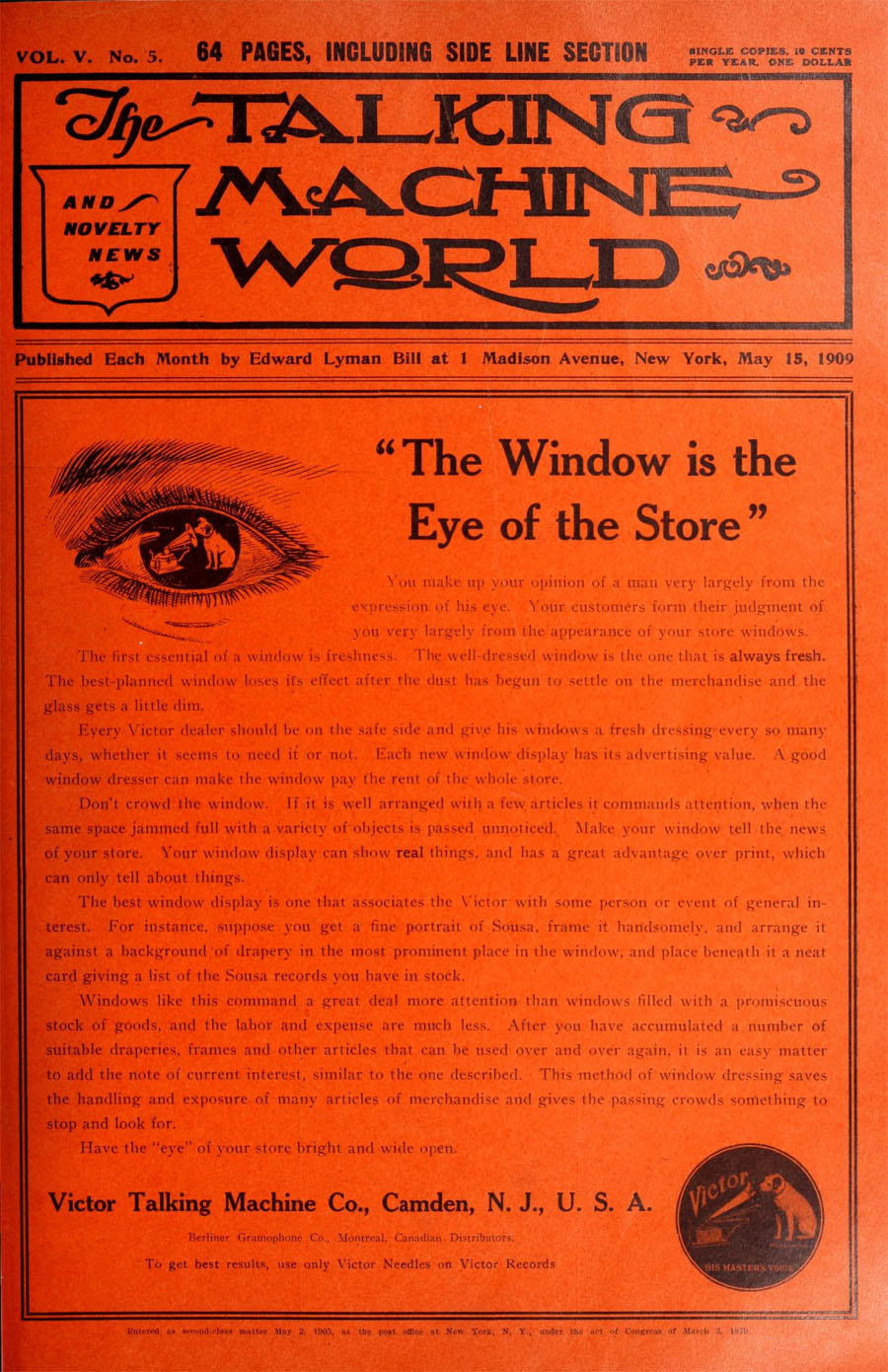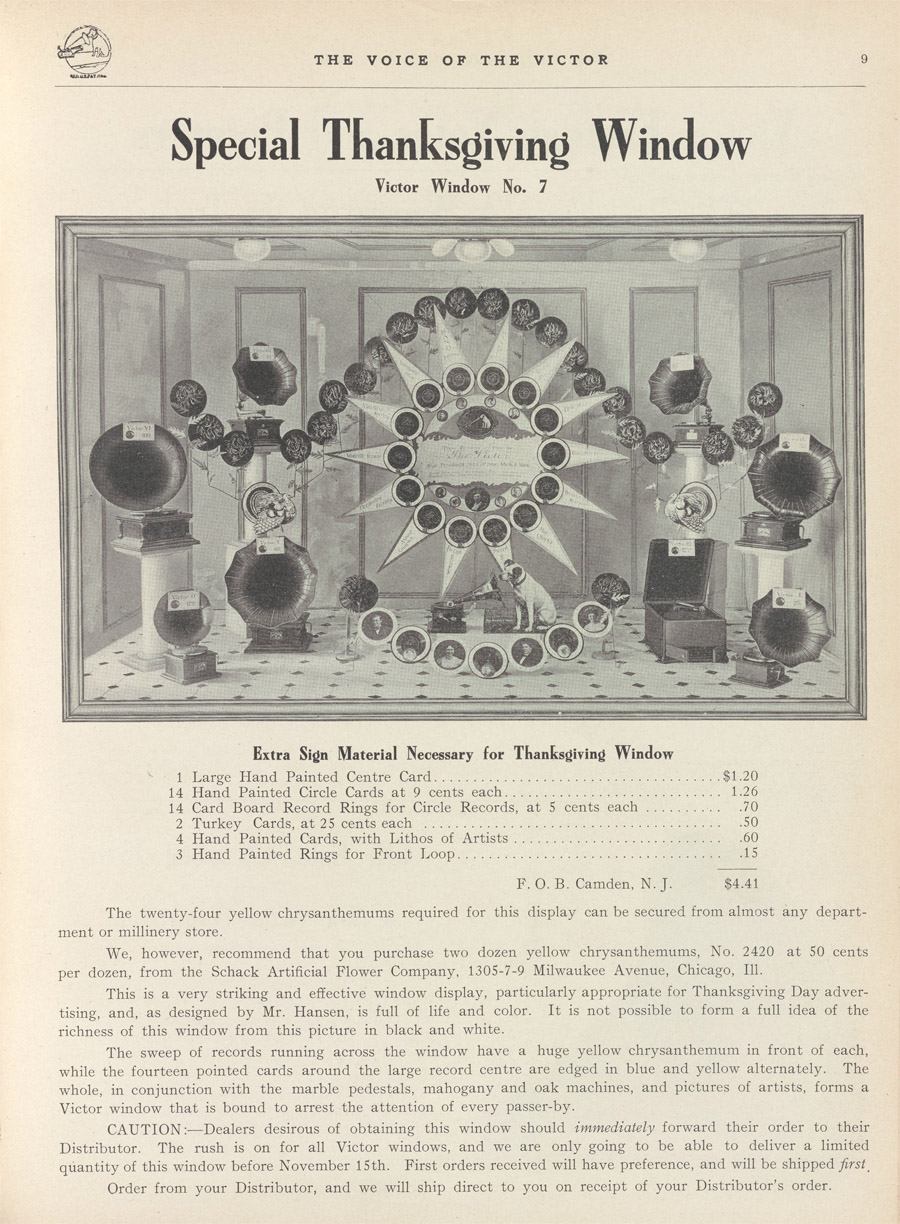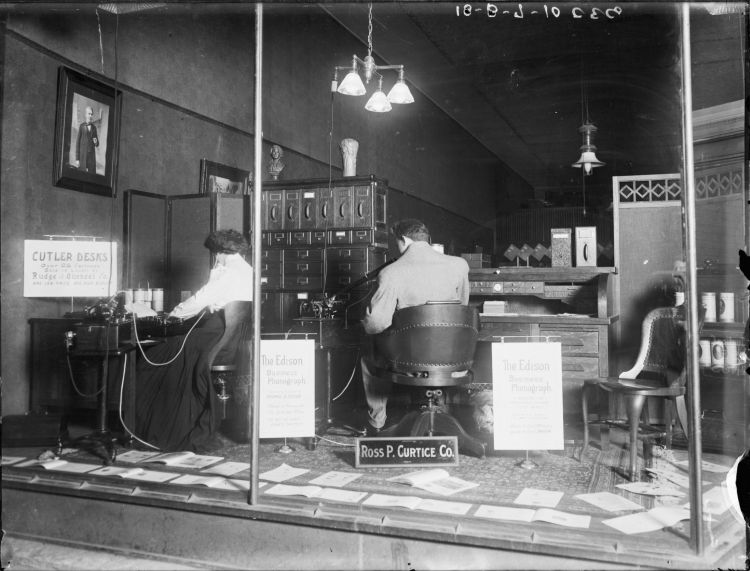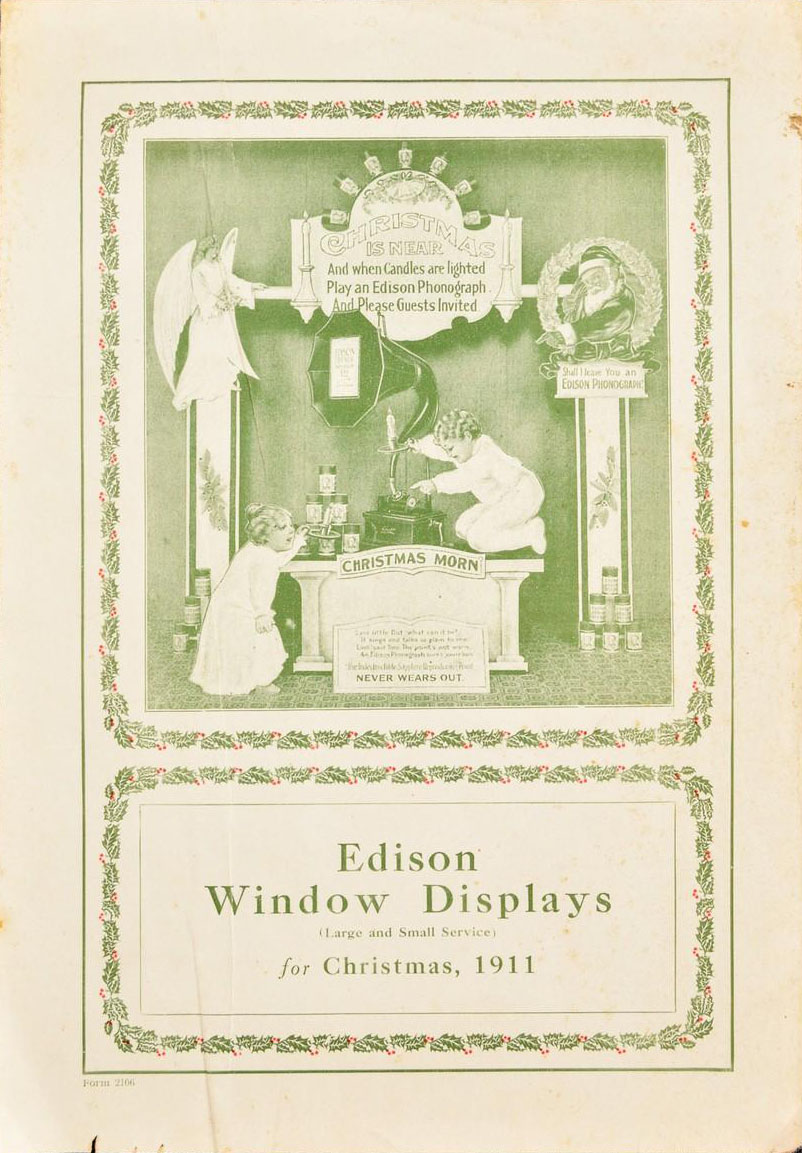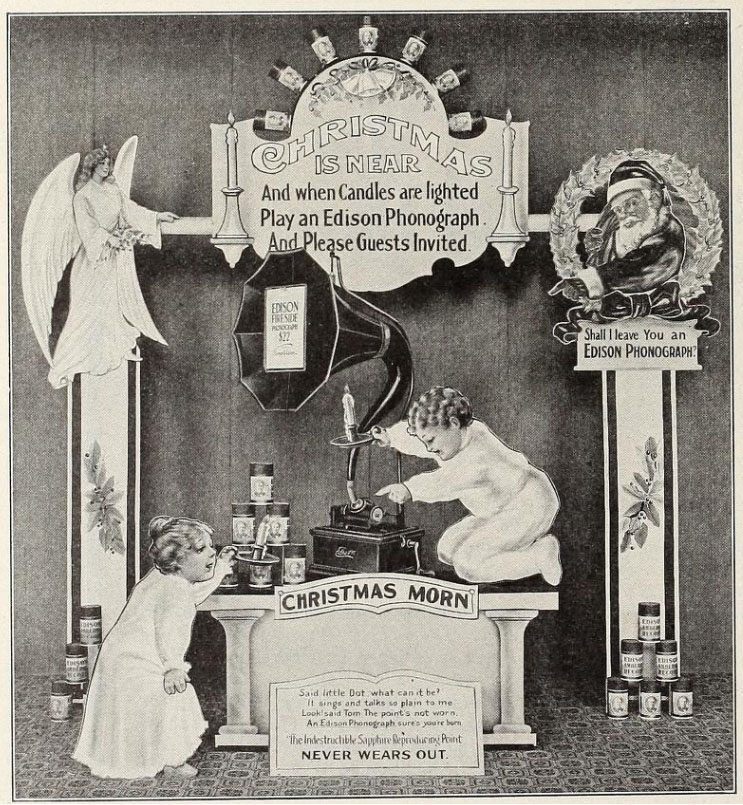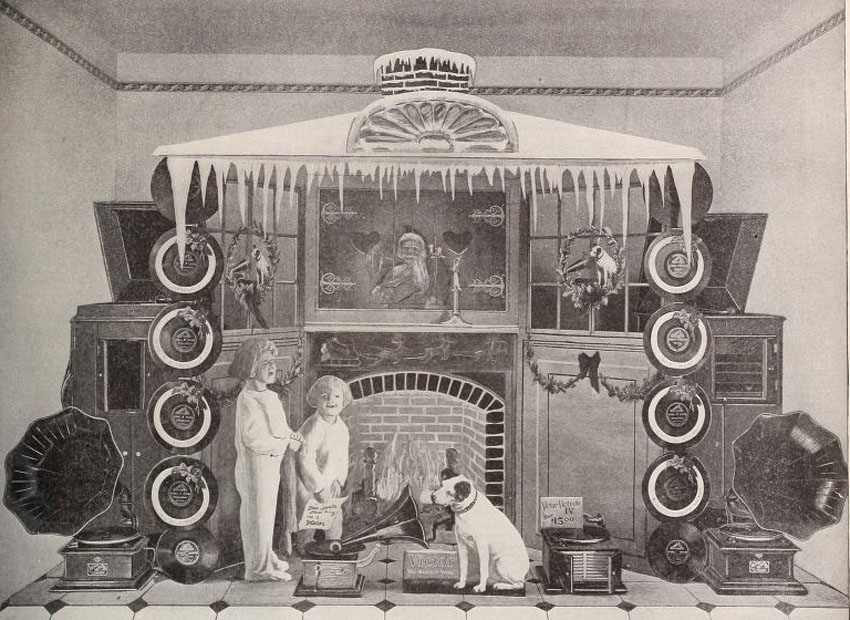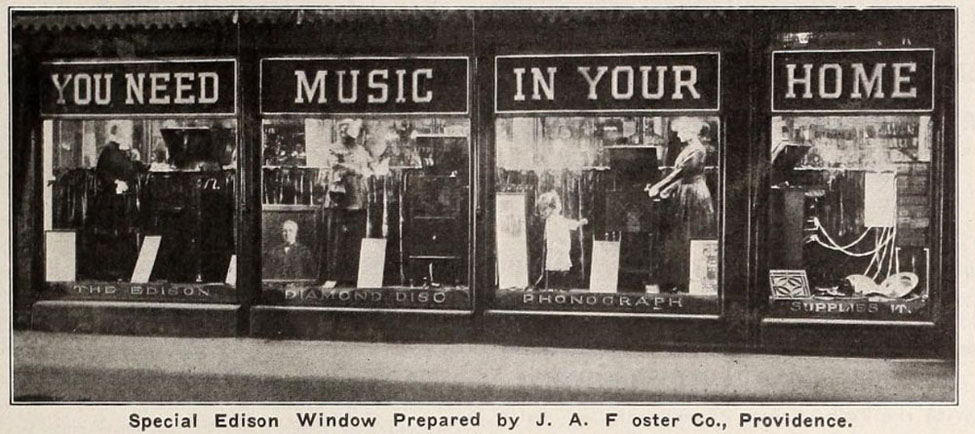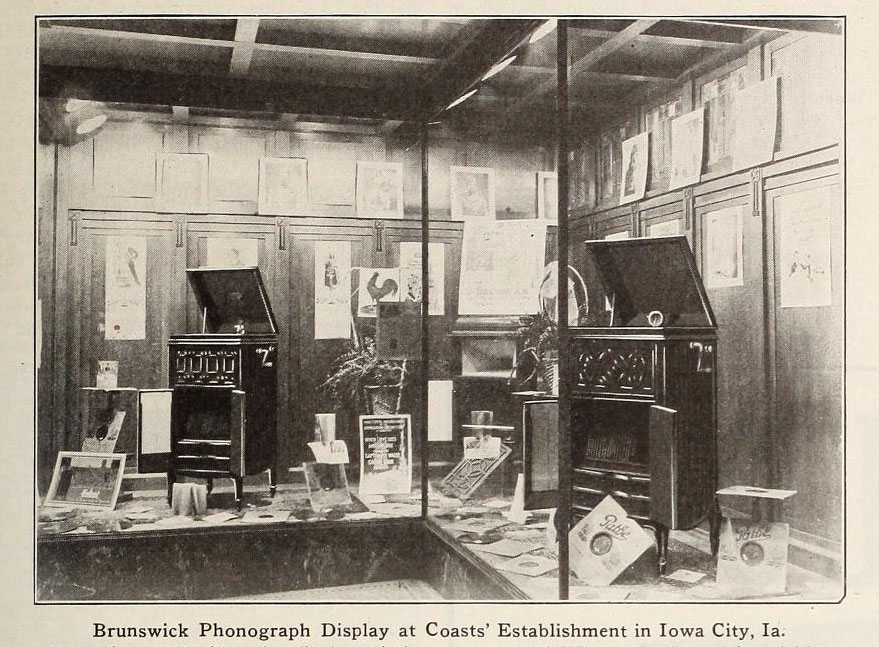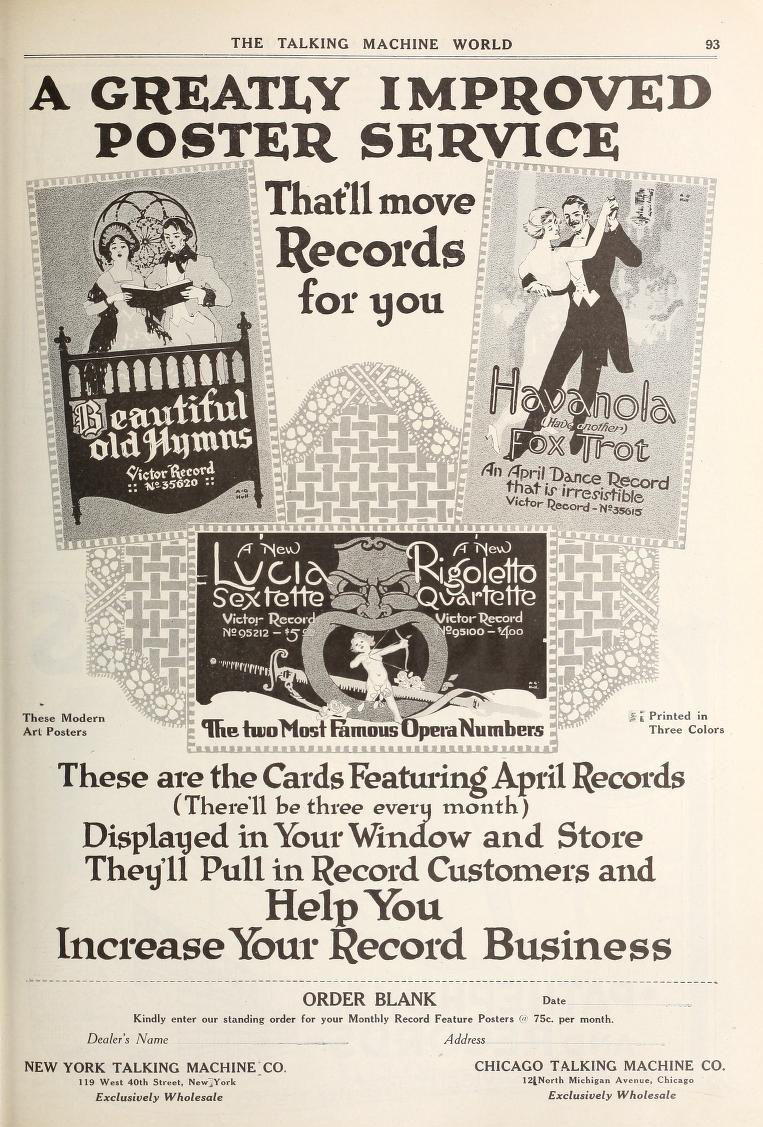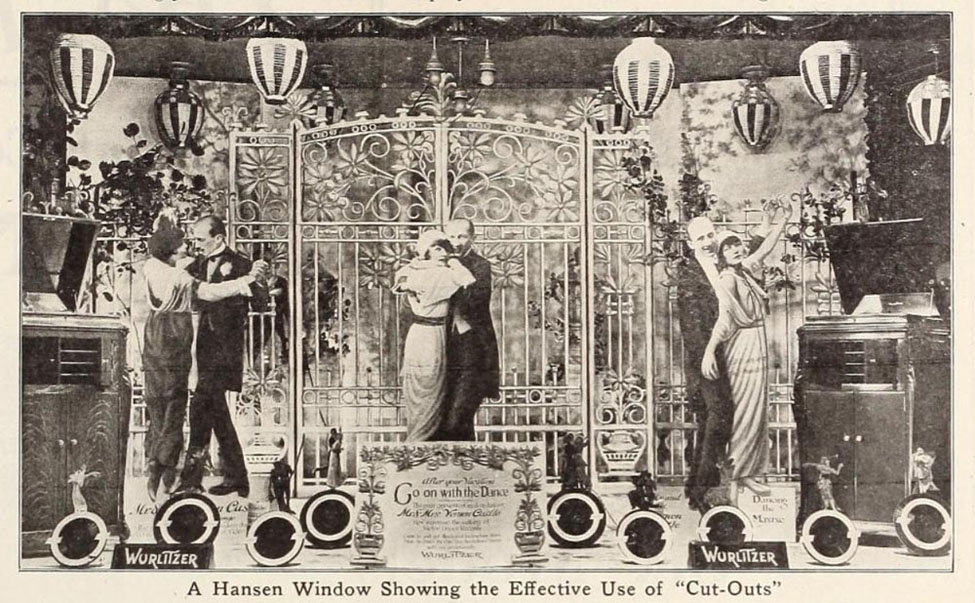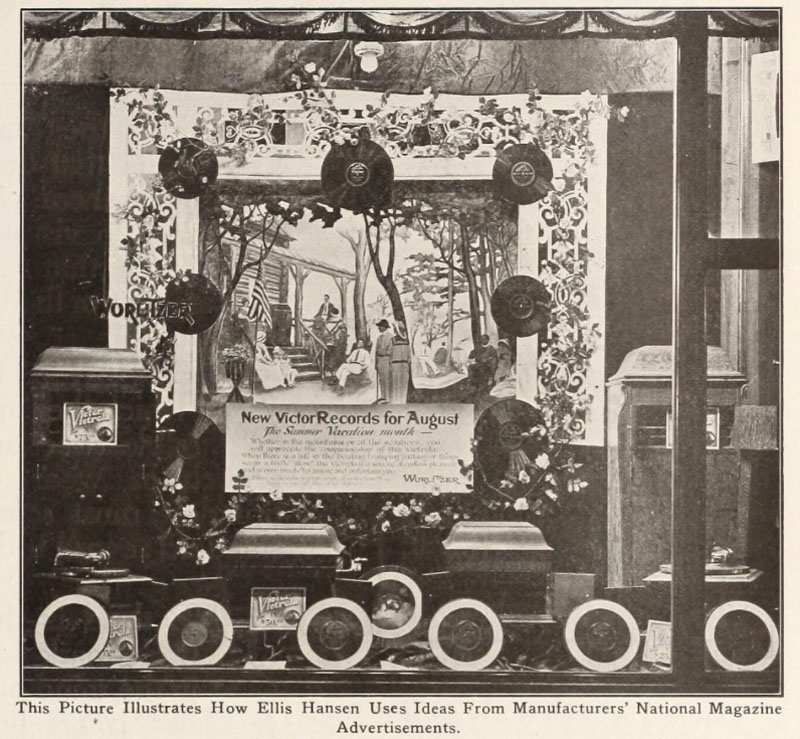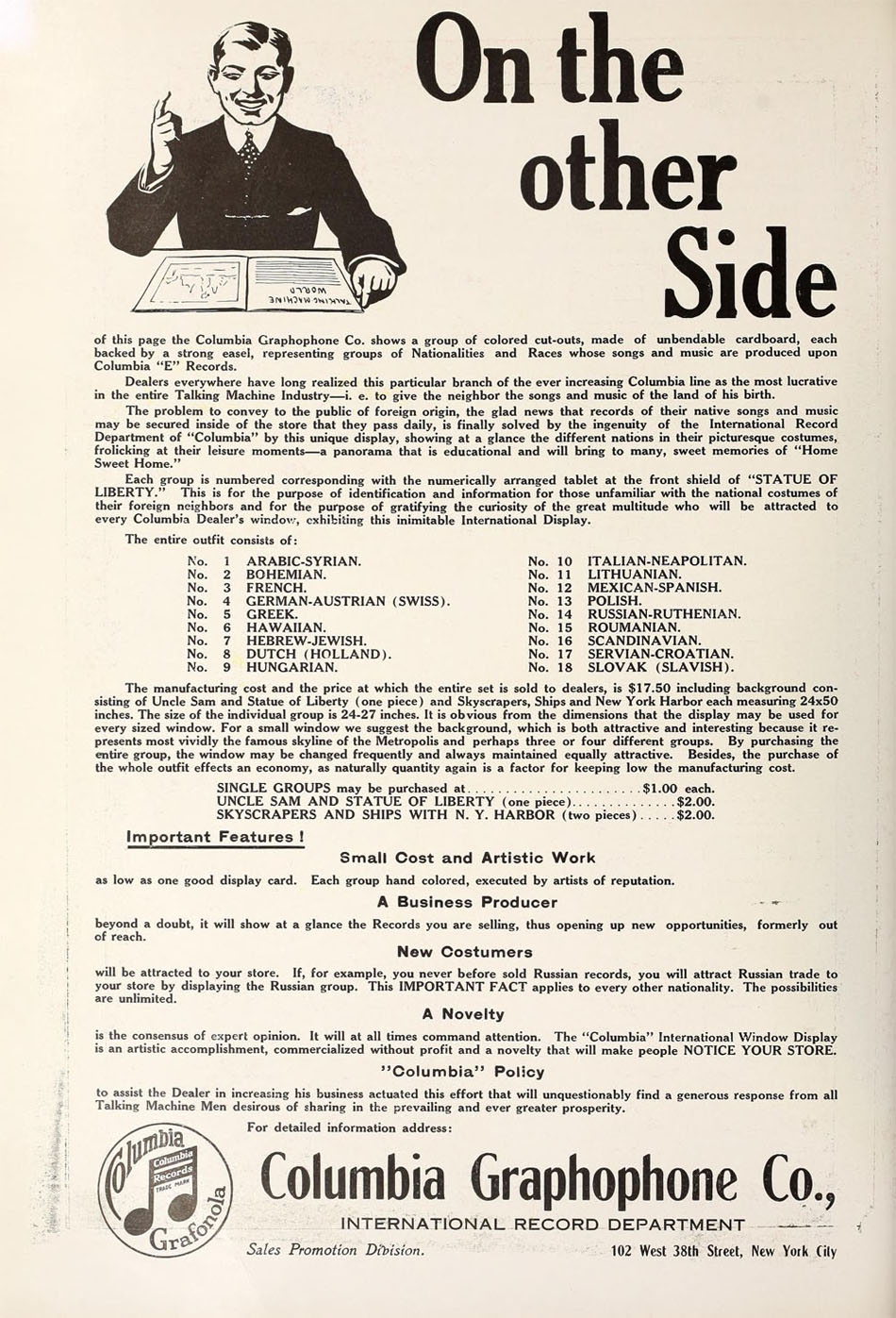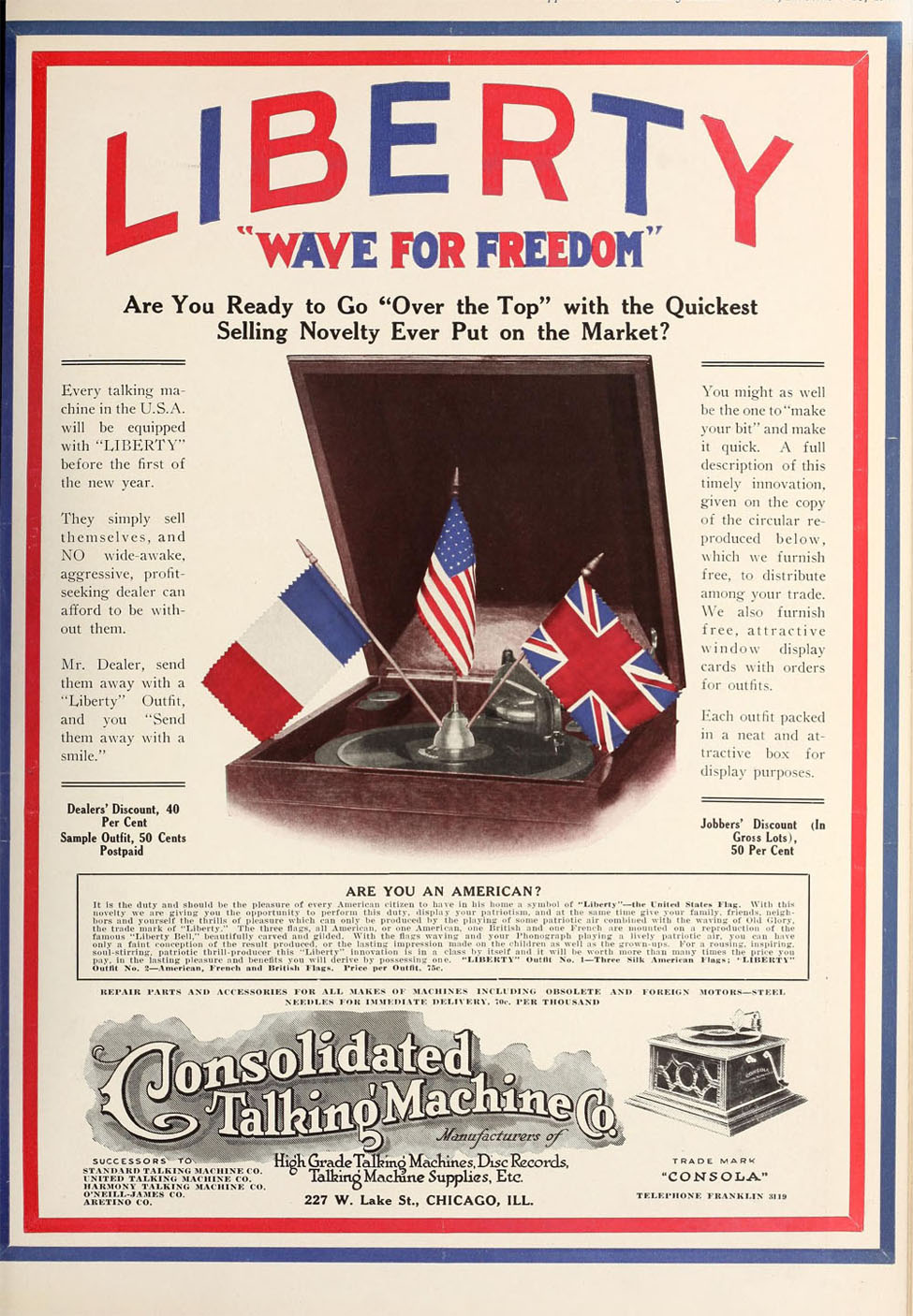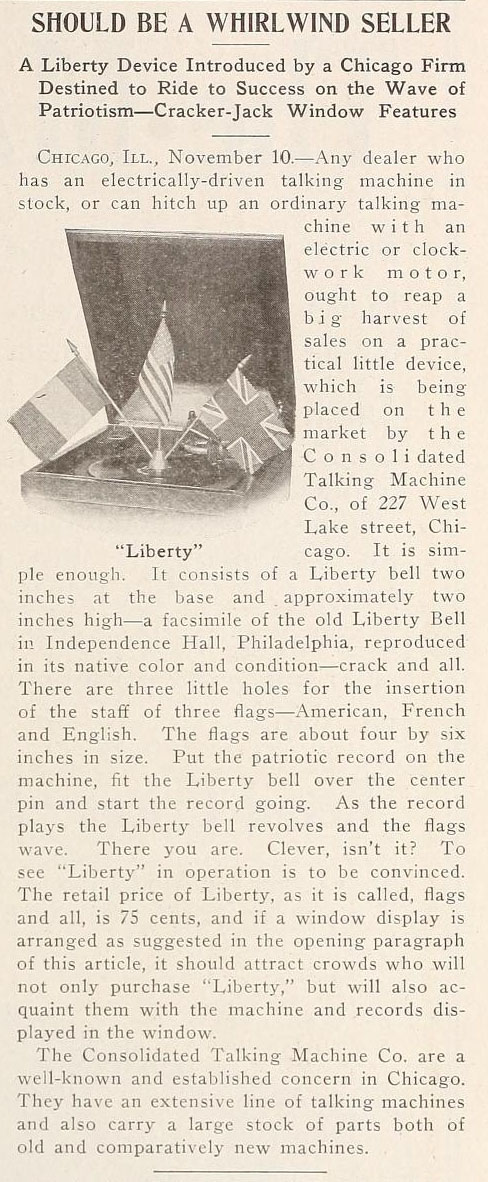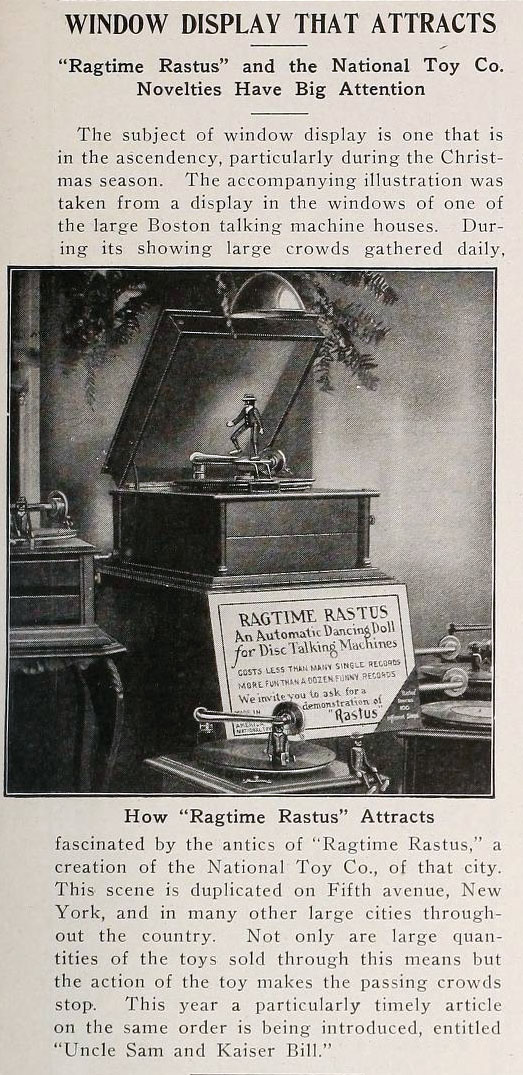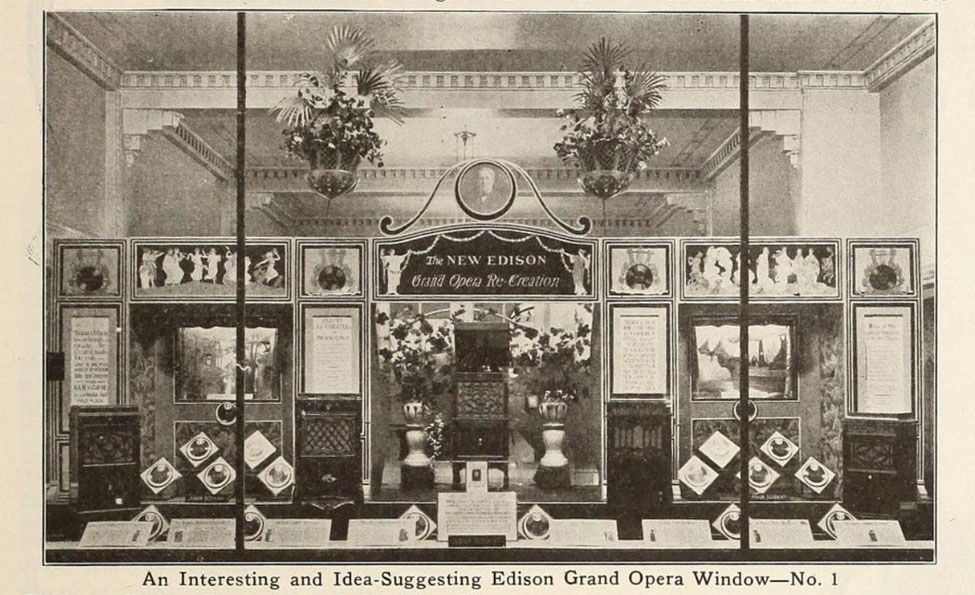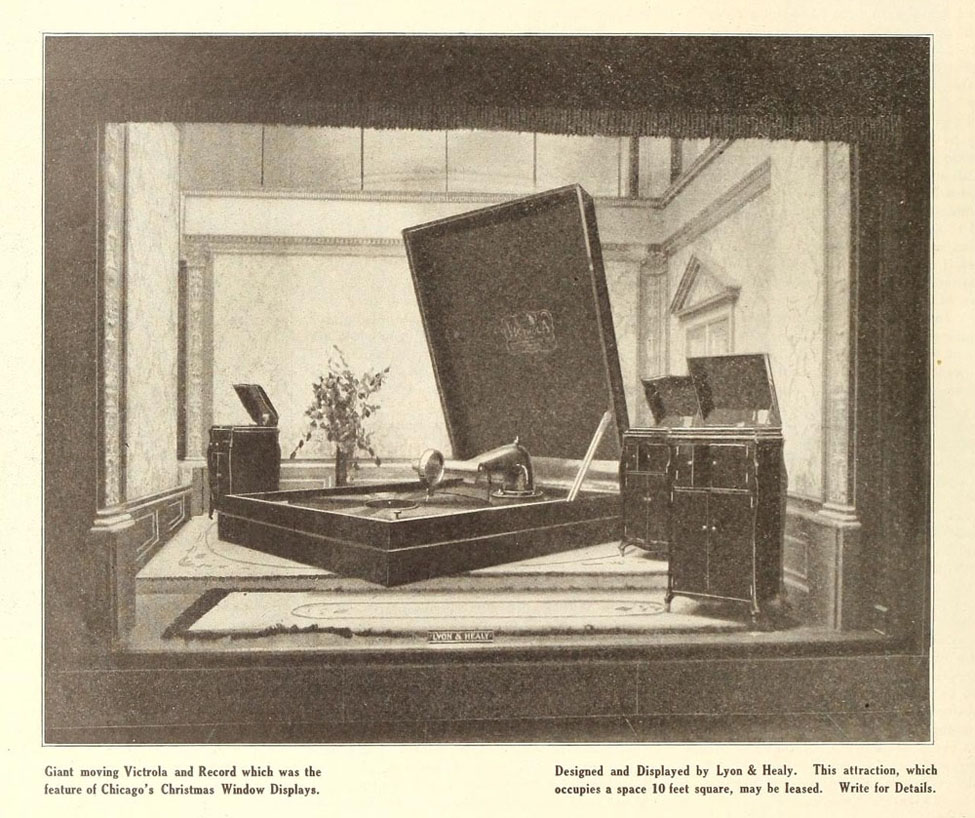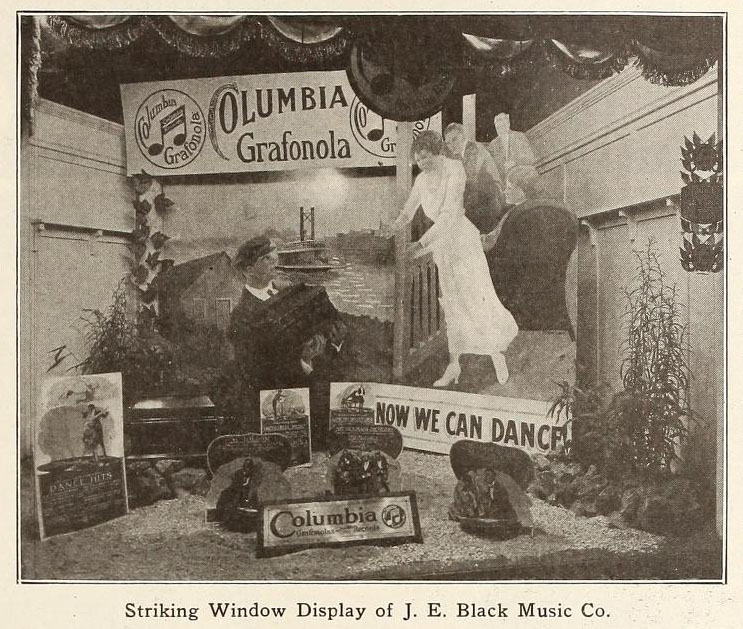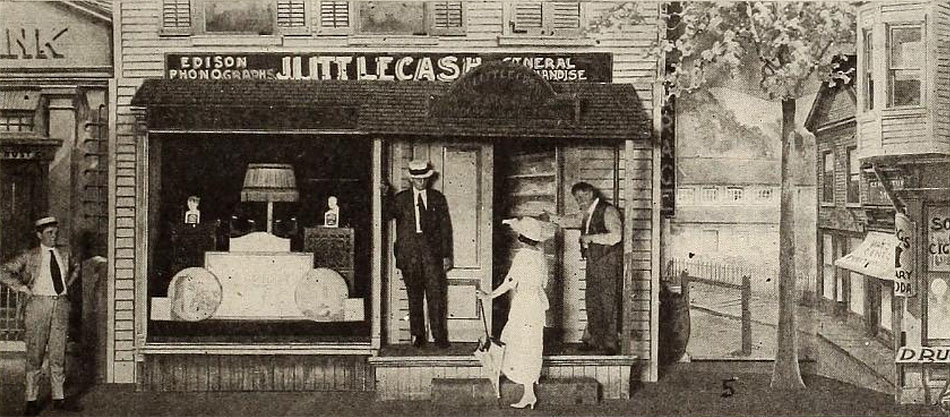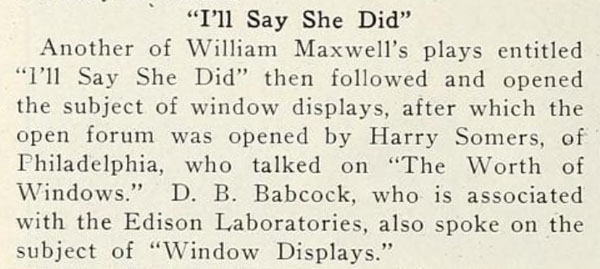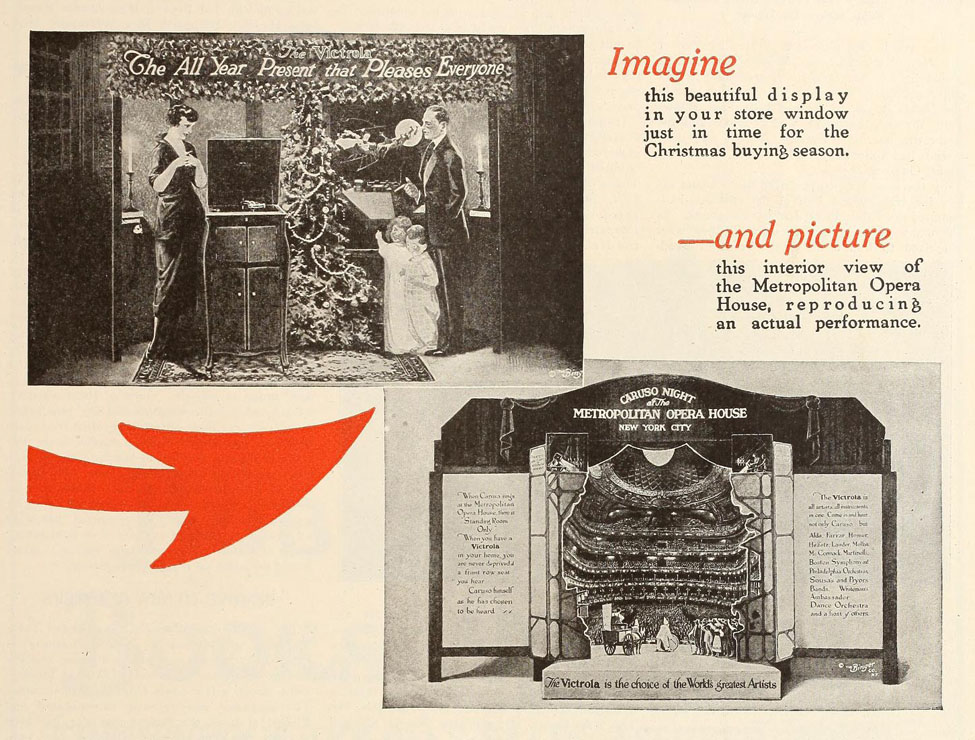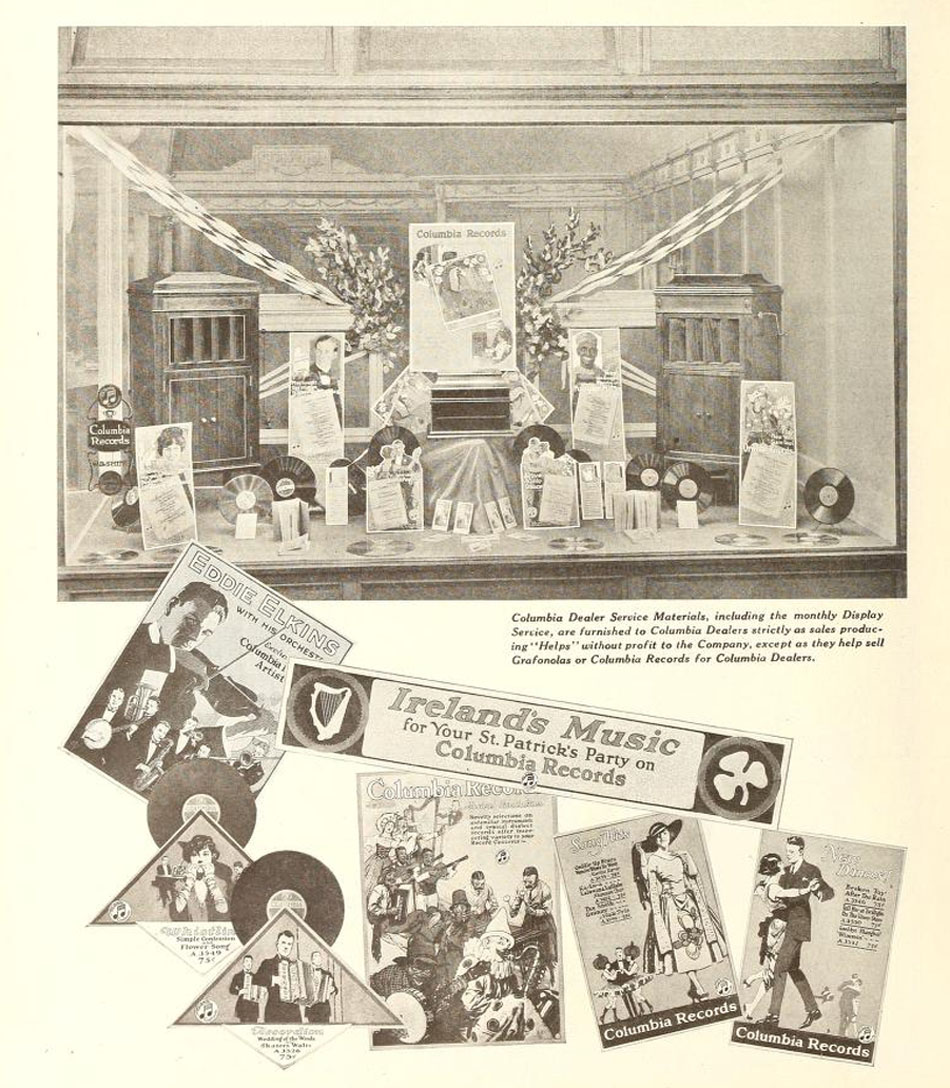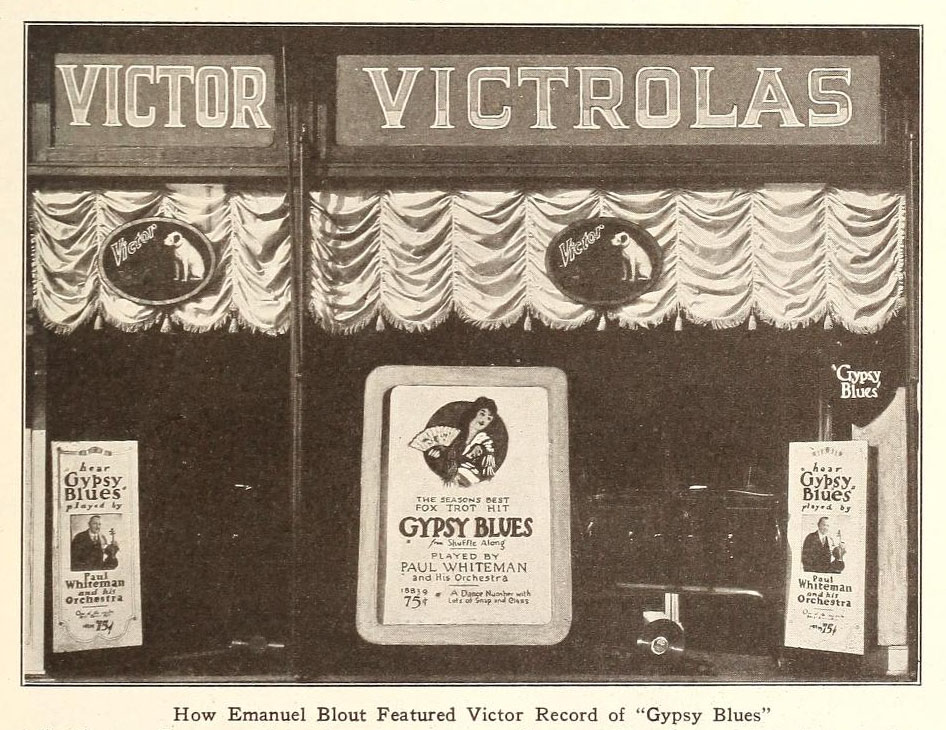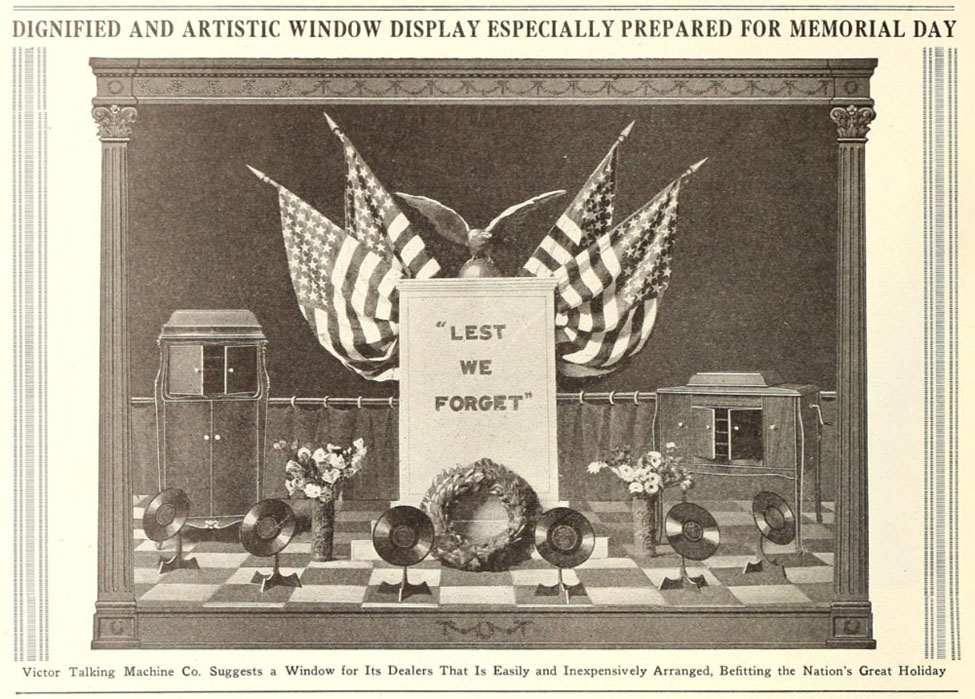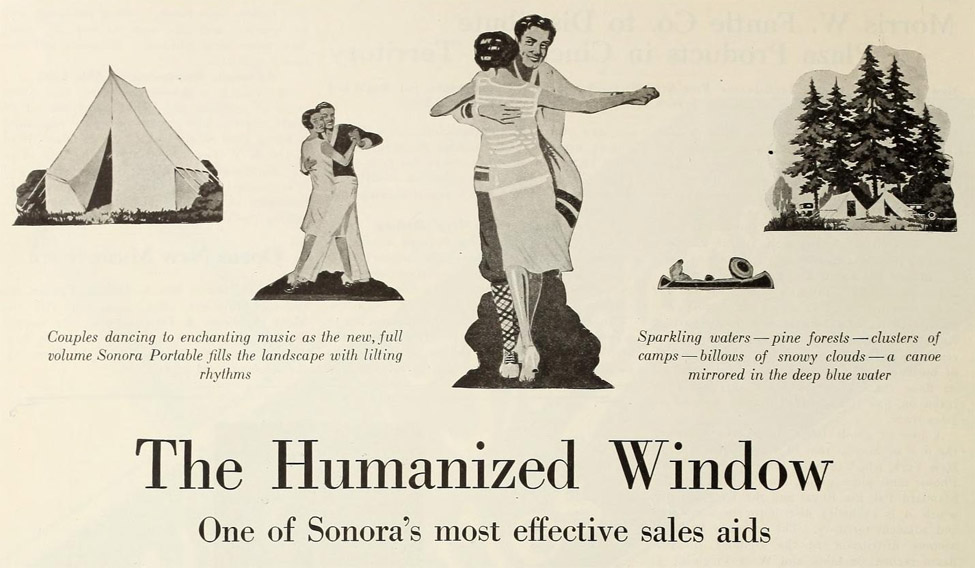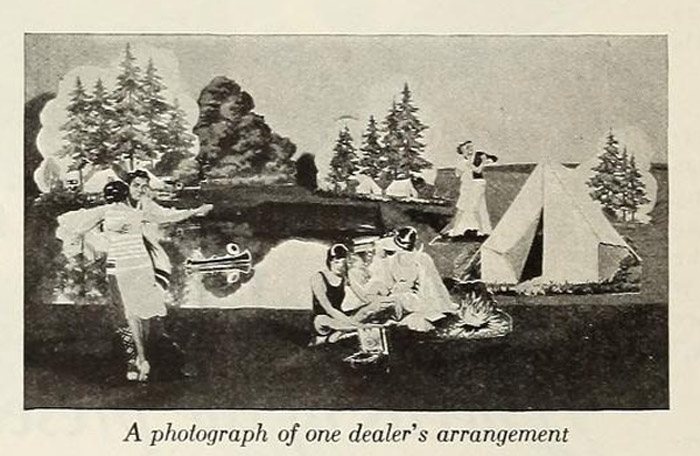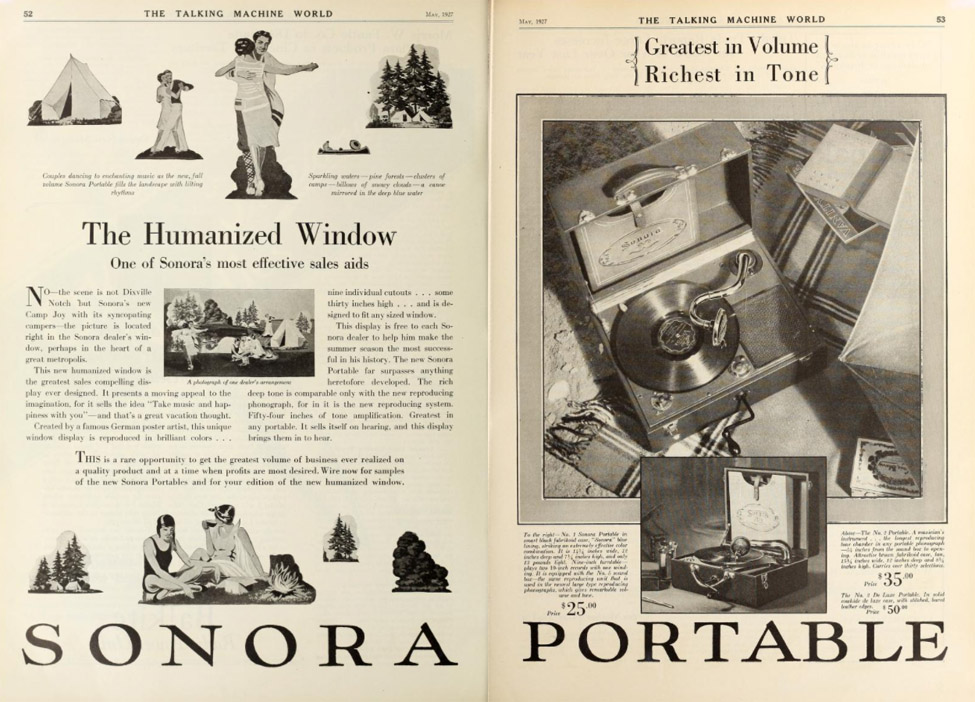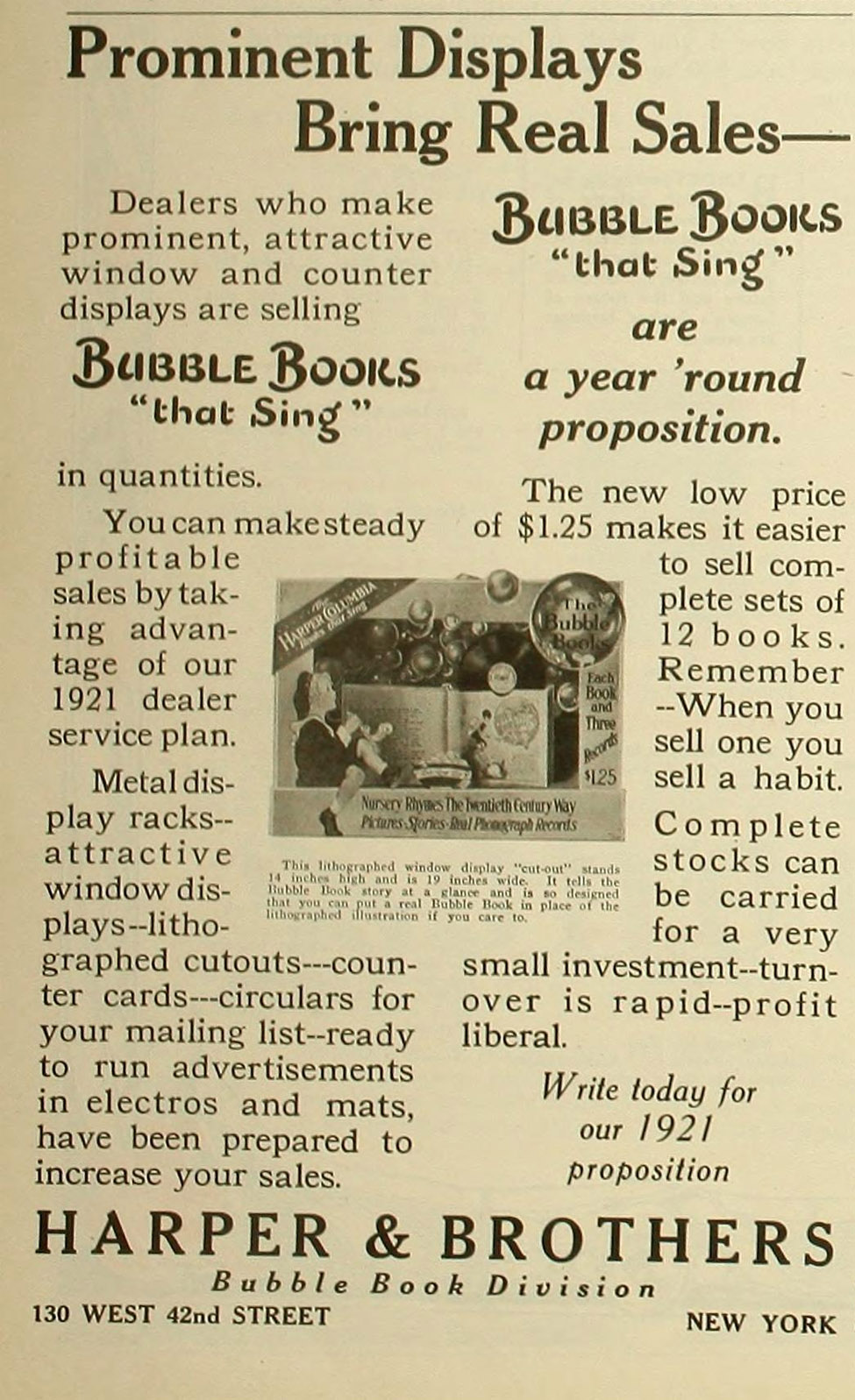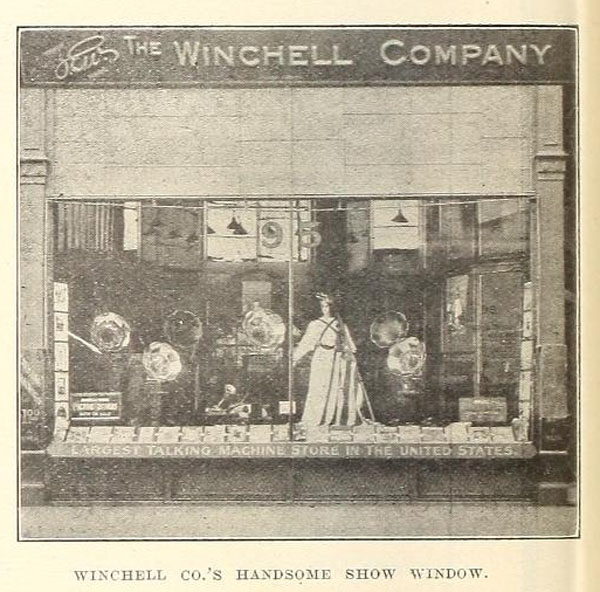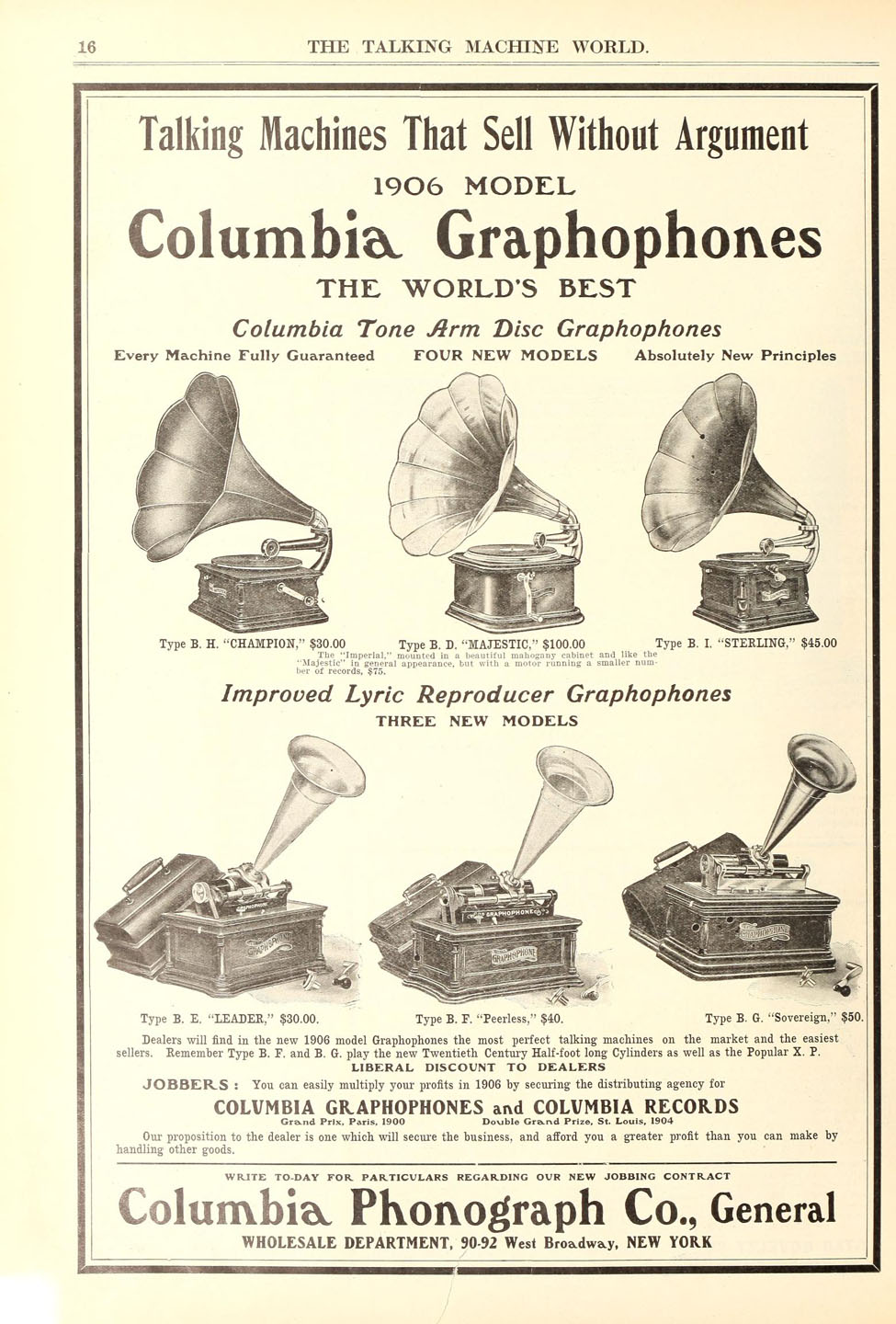|
Phonograph Windows Window Displays promoting the Phonograph
The Edison Phonograph Monthly, September 1908
The Edison Phonograph Monthly, October 1908
The Talking Machine World, October 1908
The Voice of the Victor (1909) (Ibid. NYPL, p. 7)
"The Window is the Eye of the Store," The Talking Machine World, May 15, 1909
Ross P. Curtice Company, Lincoln, NE, July 8, 1910. Window interior advertising the Edison Business Phonograph. (Photographed by George E. Condra, 1869-1958, Courtesy History Nebraska.)
Form 2106 Edison Booklet for Edison Dealers for Christmas, 1911
The Talking Machine World, November 15, 1911
Victor Talking Machine Co.'s Christmas Window Display, The Talking Machine World, November 15, 1911.
The Talking Machine World, November 1915
The Talking Machine World, July 1917
The Talking Machine World, March 1917
The Talking Machine World, November 1917
Cracker-Jack Window Display - As the record plays the Liberty Bell revolves and the Flags wave. The Talking Machine World, November 1917
The Talking Machine World, November 1917
The Talking Machine World, November 1917
Edison Store Window Display, The Talking Machine World, February 1918
Lyon & Healy, Chicago Christmas Window Display for Victor, The Talking Machine World, January 1919
Columbia Grafonola Window Display for J. E. Black Music Co., Springfield, MO, The Talking Machine World, August 1920 See PhonoDance for associated magazine ad of this window display
The Binger Company Sales Promotion Service, The Talking Machine World, November 1920
Columbia Dealer Window and Materials, The Talking Machine World, March 1922
Victor's release of Gypsy Blues from the musical "Shuffle Along" featured in the window of Emanuel Blout's store in New York City The Talking Machine World, March 1922
The Talking Machine World, May 1922
The Talking Machine World, May 1927
Bubble Books WIndow Display, The Talking Machine World, July 15, 1921
See Mainspring Press for additional Columbia Phonograph Company Window Displays (1904 – 1907)
Columbia Graphophone display, The Talking Machine World, April 15, 1906
The Talking Machine World, January 1906
Phonographia |
